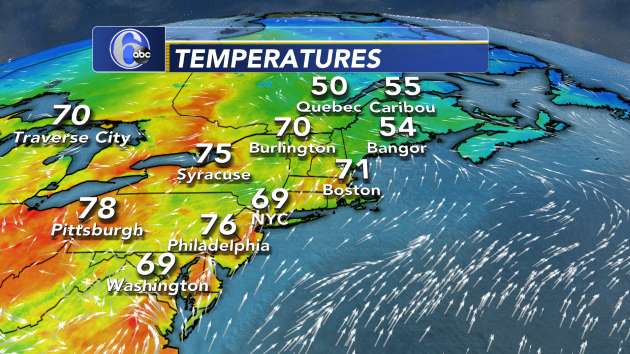Green screen TV weather forecasting
Near the end of this presentation I would like to invite one or two of you to “walk through” a short forecast
If you would like to volunteer to demonstrate your meteorological prowess – let me know at the end.
Where to Start
At the beginning of my weather unit I tell my students that they will be forecasting the weather by the end of the unit.
Each year my students see the previous student forecasts
Most students see these forecasts as the elementary teachers use them with students in the school district.
So, only a few students are nervous about the prospect of creating a forecast on camera.
Integrate into regular coursework
Students see the following labs in order, building to the culminating Students as TV Meteorologists Lab.
There are several “Products” that the students can choose from.
a.m. forecasts videos feature shorter local and regional and daily predictions and are typically about 1 minute long.
p.m. forecasts videos feature both local and National focus and are typically almost 3 minutes long.
Audition videos are short p.m. forecasts about 1 minute and are typically done as the initial lab forecast.
This allows students to want to do a “re-do” to improve their on screen performance before making the video “live” on the web.
Special Weather bulletins forecasts are created for severe weather events, mainly snow days, and placed on the school's main website as “Potential Weather Risks” and are made when the National Weather Service posts warnings.
GRAPHICS and VIDEO
Most video editing software allows for chroma keying images or secondary video streams while editing video.
Video editing software does not allow for live feeds that can be seen while recording.
This is why recording Students as TV Meteorologists requires an additional piece of equipment that
allows for live background graphics and video
1 - Current Conditions at Beekmantown Weather Station
2 - Current Northeast Temperatures

3 - Current Norteast Satellite

4 - Current Norteast Ground Radar

5 - Current US Radar and Satellite

6 - Current US Weather Summary

7 - Tomorrow's US Forecast Map

8 - 7-Day Forecast (Get your own at http://www.weatherusa.net/wxonyoursite/)
EQUIPMENT:
Logitech HD Pro Webcam C920 1080p
I use a standard desktop PC (i7 Quad Core) with three-video output (XPS 8900 with 16 Gb Ram)
Placing the Chroma Key screen about 10 feet from the camera works well to create a large enough forecast image and allows for easy adjustment for alternating heights of students.
A typical backdrop with lighting and poles costs about $150
Lighting is important. Staying away from natural lighting allows for less fluctuation in Chroma keying issues.
The cost and longevity of the battery is also good.
A typical NADY wireless system costs about $50 and is available from music supply companies.
Any Power point remote will work well.
One note is that the secondary monitor Power point show usually has to remain active for the remote to advance the power point forecast sequences.
This is accomplished by clicking on the show in the Windows task bar.
Cost about $25-$40
Open Broadcaster Software (OBSProject) COMBINES the Video image with the Chroma Key Setting replacing the green or blue with the Live Power Point.
You can live-stream directly from OBS or upload to youtube.com or vimeo.com
MS Power point presentation software
LibreOffice(opensource) presentation software